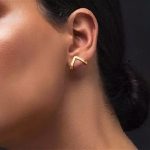How to take out an earring? Earrings are a fun way to express yourself and accessorize your outfit. But sometimes, taking them out can be a bit tricky, especially if they’re new or you haven’t worn them in a while. Here’s a guide to removing your earrings safely and easily, minimizing any discomfort or hassle.
Understanding Your Earrings
The first step is to identify the type of earring closure you’re dealing with. Here are some of the most common types:
Stud Earrings:
These have a post that goes through the piercing and a backing that secures it in place. Backings can be screw-on, butterfly, or push-back closures.
Hoop Earrings:
These come in various closures, like click-in hoops that snap shut or lever-back hoops that open with a small clasp.
Dangle Earrings:
These typically use a hook that goes through the piercing and a clasp or loop at the end.
Once you know the type of closure, you can follow the specific removal instructions below.
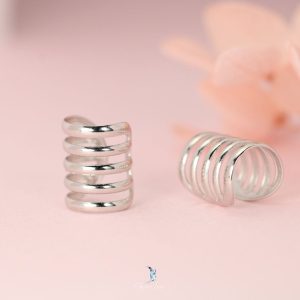
Removing Stud Earrings
Here’s how to take out stud earrings with different backings:
- Screw-on Backings: Grip the back of the earring firmly and twist it counter-clockwise until it loosens and detaches from the post.
- Butterfly Backings: Pinch the sides of the butterfly backing together gently. This should push the backing away from the post, allowing you to slide it off.
- Push-Back Backings: These small, flat backs simply slide off the post. Gently push the back of the earring with your thumb or fingertip in the direction away from your earlobe.
For all stud earrings: Hold the front of the earring with your thumb and index finger while you remove the back. This provides stability and prevents the earring from falling out accidentally.
Removing Hoop Earrings
Hoop earrings come in various closure mechanisms. Here are two common types:
- Click-In Hoops: These hoops have a hinged opening that snaps shut. To remove, gently press the clasp mechanism on the side of the hoop and pull the hoop open.
- Lever-Back Hoops: These hoops have a small lever that opens and closes the clasp. Locate the lever and move it down or away from the hoop to release the clasp. Then, gently pull the hoop open.
General tip for hoop earrings: When opening or closing hoops, hold the earring near the clasp to provide control and avoid pulling on the part that goes through your piercing.

Removing Dangle Earrings
Dangle earrings typically use a hook that goes through the piercing and a clasp or loop at the end. Here’s how to remove them:
- Support the bottom of the earring with your thumb or fingertip.
- Locate the clasp or loop at the end of the earring hook.
- Depending on the clasp type, gently unfasten it or pull the loop open.
- Carefully slide the hook out of your piercing.
Tip: If the clasp is small or fiddly, you can use a pair of tweezers to hold it open while you remove the earring.
Keeping Your Ears Happy
Here are some aftercare tips to keep your piercings healthy and comfortable:
- Clean your earrings regularly. Use rubbing alcohol or a gentle cleaning solution to wipe down the posts or hoops.
- Clean your piercings regularly. Use a saline solution or a piercing cleanser to gently clean the piercing hole.
- Avoid wearing earrings while swimming or showering. Chlorine and other chemicals can irritate piercings.
- Don’t sleep in new earrings. Let your piercings heal completely before sleeping with earrings in.
By following these tips, you can take out your earrings safely and keep your piercings healthy and happy.
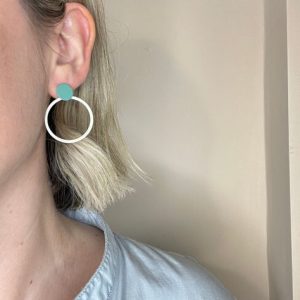
When to Seek Help Removing Earrings
In some situations, it might be best to seek help removing your earrings. Here are some instances where professional assistance is recommended:
- If you’re experiencing pain or discomfort: If your earlobe feels sore, swollen, or if you’re in pain while trying to remove the earring, it’s best to see a professional piercer or doctor. They have the tools and expertise to remove the earring safely and minimize irritation.
- If the earring is stuck: If the earring is stuck due to swelling, crusting, or a broken clasp, don’t try to force it out. You could injure your earlobe or damage the earring. A professional can help remove the earring safely and recommend aftercare for your piercing.
- If you’re new to piercings: If you’re new to piercings and feel unsure about removing them yourself, especially if they have a complex closure, a piercer can guide you through the process and ensure it’s done correctly.
By understanding different earring closures and following these tips, you can remove your earrings safely and with ease. Remember, prioritize your comfort and the health of your piercings. If you experience any difficulties or discomfort, don’t hesitate to seek help from a professional piercer or doctor.
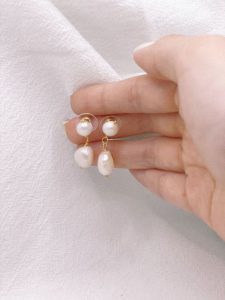
Extra Tips for Easy Earring Removal
Here are some additional tricks to make removing your earrings even smoother:
-
Wash your hands: Before handling your earrings or piercings, wash your hands with soap and warm water. This helps prevent introducing bacteria to your piercings.
-
Gather supplies: Having all the tools you need readily available saves time and frustration. You might need a mirror, cotton balls, and any cleaning solution you use for your earrings (depending on the material).
-
Work in a well-lit area: Good lighting helps you see the earring closure clearly, especially for smaller earrings or intricate clasps.
-
Be gentle: Avoid yanking or pulling on your earrings. Take your time and use slow, controlled movements.
-
Clean your earrings: After removing them, wipe them down with a gentle cleaning solution or rubbing alcohol. This removes any debris or buildup that could irritate your piercings.
By following these tips, you can confidently remove your earrings and keep your piercings healthy and happy.
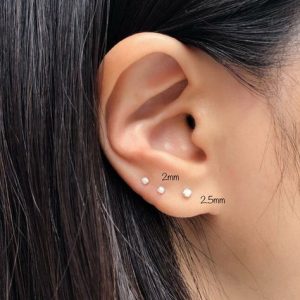
Conclusion: Safe and Easy Earring Removal
Taking out your earrings doesn’t have to be a challenge. With a little knowledge about different earring closures and some handy techniques, you can remove them safely and comfortably. Remember to prioritize your comfort and the health of your piercings. If you encounter any difficulties, don’t hesitate to seek help from a professional piercer or doctor.

